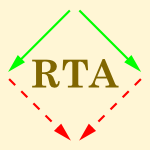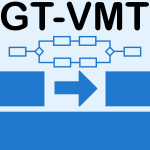228 papers:
 DATE-2015-LuLJLHCL #standard
DATE-2015-LuLJLHCL #standard- Simultaneous transistor pairing and placement for CMOS standard cells (AL, HJL, EJJ, YPL, CHH, CCC, RBL), pp. 1647–1652.
 DRR-2015-StalnakerZ #retrieval #using
DRR-2015-StalnakerZ #retrieval #using- Math expression retrieval using an inverted index over symbol pairs (DS, RZ), p. 940207.
 VLDB-2015-YuM #network #performance #scalability
VLDB-2015-YuM #network #performance #scalability- Efficient Partial-Pairs SimRank Search for Large Networks (WY, JAM), pp. 569–580.
 ITiCSE-2015-UraiUO #analysis #distributed #programming
ITiCSE-2015-UraiUO #analysis #distributed #programming- Enhancements to Support Functions of Distributed Pair Programming Based on Action Analysis (TU, TU, NO), pp. 177–182.
 CSCW-2015-ZytkoFGHJ #collaboration #evaluation #online #process
CSCW-2015-ZytkoFGHJ #collaboration #evaluation #online #process- Enhancing Evaluation of Potential Dates Online Through Paired Collaborative Activities (DZ, GF, SAG, SCH, QJ), pp. 1849–1859.
 ICML-2015-BachHBG #learning #performance
ICML-2015-BachHBG #learning #performance- Paired-Dual Learning for Fast Training of Latent Variable Hinge-Loss MRFs (SHB, BH, JLBG, LG), pp. 381–390.
 RecSys-2015-SahebiB #collaboration
RecSys-2015-SahebiB #collaboration- It Takes Two to Tango: An Exploration of Domain Pairs for Cross-Domain Collaborative Filtering (SS, PB), pp. 131–138.
 SIGIR-2015-SeverynM #learning #network #rank
SIGIR-2015-SeverynM #learning #network #rank- Learning to Rank Short Text Pairs with Convolutional Deep Neural Networks (AS, AM), pp. 373–382.
 ICSE-v2-2015-Zieris #analysis #information management #programming
ICSE-v2-2015-Zieris #analysis #information management #programming- Qualitative Analysis of Knowledge Transfer in Pair Programming (FZ), pp. 855–858.
 CADE-2015-IborraNVY #dependence #problem #termination
CADE-2015-IborraNVY #dependence #problem #termination- Reducing Relative Termination to Dependency Pair Problems (JI, NN, GV, AY), pp. 163–178.
 CADE-2015-SatoW #dependence #encoding
CADE-2015-SatoW #dependence #encoding- Encoding Dependency Pair Techniques and Control Strategies for Maximal Completion (HS, SW), pp. 152–162.
 LICS-2015-ChatterjeeHL #algorithm
LICS-2015-ChatterjeeHL #algorithm- Improved Algorithms for One-Pair and k-Pair Streett Objectives (KC, MH, VL), pp. 269–280.
 TLCA-2015-BucciarelliKR #calculus
TLCA-2015-BucciarelliKR #calculus- Observability for Pair Pattern Calculi (AB, DK, SRDR), pp. 123–137.
 ASE-2014-WangWWYSYLFG #concurrent #debugging #locality #memory management #using
ASE-2014-WangWWYSYLFG #concurrent #debugging #locality #memory management #using- Localization of concurrency bugs using shared memory access pairs (WW, ZW, CW, PCY, XS, XY, JL, XF, YG), pp. 611–622.
 DAC-2014-AsadiniaAS #named #on-demand
DAC-2014-AsadiniaAS #named #on-demand- OD3P: On-Demand Page Paired PCM (MA, MA, HSA), p. 6.
 ITiCSE-2014-KothiyalMI #learning #question #scalability
ITiCSE-2014-KothiyalMI #learning #question #scalability- Think-pair-share in a large CS1 class: does learning really happen? (AK, SM, SI), pp. 51–56.
 ITiCSE-2014-McKinseyJFG #online #programming
ITiCSE-2014-McKinseyJFG #online #programming- Remote pair programming (RPP) in massively open online courses (MOOCs) (JM, SJ, AF, DDG), p. 340.
 TACAS-2014-ReinbacherRS #health #realtime #runtime
TACAS-2014-ReinbacherRS #health #realtime #runtime- Temporal-Logic Based Runtime Observer Pairs for System Health Management of Real-Time Systems (TR, KYR, JS), pp. 357–372.
 WRLA-2014-LucasM14a #2d #dependence #proving #termination
WRLA-2014-LucasM14a #2d #dependence #proving #termination- 2D Dependency Pairs for Proving Operational Termination of CTRSs (SL, JM), pp. 195–212.
 CSMR-WCRE-2014-DamevskiSP #case study #code search
CSMR-WCRE-2014-DamevskiSP #case study #code search- A case study of paired interleaving for evaluating code search techniques (KD, DCS, LLP), pp. 54–63.
 STOC-2014-Williams14a #complexity #performance
STOC-2014-Williams14a #complexity #performance- Faster all-pairs shortest paths via circuit complexity (RW), pp. 664–673.
 LATA-2014-BeerenwinkelBBDP #graph
LATA-2014-BeerenwinkelBBDP #graph- Covering Pairs in Directed Acyclic Graphs (NB, SB, PB, RD, YP), pp. 126–137.
 CSCW-2014-MillerZGG #collaboration #learning #people #research
CSCW-2014-MillerZGG #collaboration #learning #people #research- Pair research: matching people for collaboration, learning, and productivity (RCM, HZ, EG, EG), pp. 1043–1048.
 ICEIS-v1-2014-AmorimC #clustering #evaluation
ICEIS-v1-2014-AmorimC #clustering #evaluation- Paired Indices for Clustering Evaluation — Correction for Agreement by Chance (MJA, MGMSC), pp. 164–170.
 ICEIS-v2-2014-EstacioP #distributed #programming #set
ICEIS-v2-2014-EstacioP #distributed #programming #set- A Set of Practices for Distributed Pair Programming (BJdSE, RP), pp. 331–338.
 ICPR-2014-GaoRKL #documentation
ICPR-2014-GaoRKL #documentation- Embedding Document Structure to Bag-of-Words through Pair-wise Stable Key-Regions (HG, MR, DK, JL), pp. 2903–2908.
 ICPR-2014-LiZSG #image
ICPR-2014-LiZSG #image- Joint Motion Deblurring with Blurred/Noisy Image Pair (HL, YZ, JS, DG), pp. 1020–1024.
 ICPR-2014-SinghKZ #detection #difference #image #markov #multi #scalability
ICPR-2014-SinghKZ #detection #difference #image #markov #multi #scalability- A Multilayer Markovian Model for Change Detection in Aerial Image Pairs with Large Time Differences (PS, ZK, JZ), pp. 924–929.
 LOPSTR-2014-LucasMG #2d #dependence #framework #term rewriting
LOPSTR-2014-LucasMG #2d #dependence #framework #term rewriting- Extending the 2D Dependency Pair Framework for Conditional Term Rewriting Systems (SL, JM, RG), pp. 113–130.
 PPoPP-2014-WangWYYWL0 #concurrent #debugging #locality #memory management #using
PPoPP-2014-WangWYYWL0 #concurrent #debugging #locality #memory management #using- Concurrency bug localization using shared memory access pairs (WW, CW, PCY, XY, ZW, JL, XF), pp. 375–376.
 RTA-TLCA-2014-LiuDJ #analysis #confluence
RTA-TLCA-2014-LiuDJ #analysis #confluence- Confluence by Critical Pair Analysis (JL, ND, JPJ), pp. 287–302.
 ICDAR-2013-RoyPR #image
ICDAR-2013-RoyPR #image- A Pair-Copula Based Scheme for Text Extraction from Digital Images (AR, SKP, UR), pp. 892–896.
 VLDB-2014-YuLZCP13 #effectiveness
VLDB-2014-YuLZCP13 #effectiveness- More is Simpler: Effectively and Efficiently Assessing Node-Pair Similarities Based on Hyperlinks (WY, XL, WZ, LC, JP), pp. 13–24.
 CSEET-2013-LiPK #programming
CSEET-2013-LiPK #programming- A spirit of camaraderie: The impact of pair programming on retention (ZL, CP, EK), pp. 209–218.
 ITiCSE-2013-TsompanoudiSX #collaboration #distributed #embedded #programming
ITiCSE-2013-TsompanoudiSX #collaboration #distributed #embedded #programming- Exploring the effects of collaboration scripts embedded in a distributed pair programming system (DT, MS, SX), pp. 225–230.
 ITiCSE-2013-ZarbHR #communication #guidelines #programming #student
ITiCSE-2013-ZarbHR #communication #guidelines #programming #student- Industry-inspired guidelines improve students’ pair programming communication (MZ, JH, JR), pp. 135–140.
 CHI-2013-GrigoreanuM #agile
CHI-2013-GrigoreanuM #agile- Informal cognitive walkthroughs (ICW): paring down and pairing up for an agile world (VG, MM), pp. 3093–3096.
 CHI-2013-RiceTOYWN #behaviour #game studies #interactive
CHI-2013-RiceTOYWN #behaviour #game studies #interactive- The dynamics of younger and older adult’s paired behavior when playing an interactive silhouette game (MDR, WPT, JO, LJY, MW, JN), pp. 1081–1090.
 CSCW-2013-PertererSMWT
CSCW-2013-PertererSMWT- Come drive with me: an ethnographic study of driver-passenger pairs to inform future in-car assistance (NP, PS, AM, DW, MT), pp. 1539–1548.
 HCI-IMT-2013-OkuuchiKKK #modelling #source code
HCI-IMT-2013-OkuuchiKKK #modelling #source code- Modeling Situation-Dependent Nonverbal Expressions for a Pair of Embodied Agent in a Dialogue Based on Conversations in TV Programs (KO, KK, TK, DK), pp. 340–347.
 KDD-2013-TabeiKKY #constraints #scalability #similarity
KDD-2013-TabeiKKY #constraints #scalability #similarity- Succinct interval-splitting tree for scalable similarity search of compound-protein pairs with property constraints (YT, AK, MK, YY), pp. 176–184.
 KDD-2013-WangMP #metric #scalability #similarity
KDD-2013-WangMP #metric #scalability #similarity- Scalable all-pairs similarity search in metric spaces (YW, AM, SP), pp. 829–837.
 SIGIR-2013-JagarlamudiG #modelling #web
SIGIR-2013-JagarlamudiG #modelling #web- Modeling click-through based word-pairs for web search (JJ, JG), pp. 483–492.
 ICSE-2013-Ell #developer #identification #network
ICSE-2013-Ell #developer #identification #network- Identifying failure inducing developer pairs within developer networks (JE), pp. 1471–1473.
 ICSE-2013-SalingerZP #programming #research
ICSE-2013-SalingerZP #programming #research- Liberating pair programming research from the oppressive Driver/Observer regime (SS, FZ, LP), pp. 1201–1204.
 CGO-2013-ChoKWLLM #concurrent #source code
CGO-2013-ChoKWLLM #concurrent #source code- Practical lock/unlock pairing for concurrent programs (HKC, TK, YW, SL, HL, SAM), p. 12.
 CAV-2013-ChatterjeeGK #automaton #ltl #model checking #probability #synthesis
CAV-2013-ChatterjeeGK #automaton #ltl #model checking #probability #synthesis- Automata with Generalized Rabin Pairs for Probabilistic Model Checking and LTL Synthesis (KC, AG, JK), pp. 559–575.
 CASE-2012-YangTCHC
CASE-2012-YangTCHC- A dual-forecast scheme for production output with paired/unpaired WIP data (HCY, THT, CYC, MHH, FTC), pp. 581–586.
 VLDB-2012-MetwallyF #framework #multi #named #pipes and filters #scalability #similarity
VLDB-2012-MetwallyF #framework #multi #named #pipes and filters #scalability #similarity- V-SMART-Join: A Scalable MapReduce Framework for All-Pair Similarity Joins of Multisets and Vectors (AM, CF), pp. 704–715.
 CHI-2012-JungCL #interactive #performance #programming
CHI-2012-JungCL #interactive #performance #programming- Group hedonic balance and pair programming performance: affective interaction dynamics as indicators of performance (MJ, JC, LJL), pp. 829–838.
 CSCW-2012-NussliJ #interactive #programming #quality
CSCW-2012-NussliJ #interactive #programming #quality- Effects of sharing text selections on gaze cross-recurrence and interaction quality in a pair programming task (MAN, PJ), pp. 1125–1134.
 CIKM-2012-WongCTP #using #web
CIKM-2012-WongCTP #using #web- Mixed-initiative conversational system using question-answer pairs mined from the web (WW, LC, JT, LP), pp. 2707–2709.
 ECIR-2012-DasMG #classification #identification #topic
ECIR-2012-DasMG #classification #identification #topic- Phrase Pair Classification for Identifying Subtopics (SD, PM, CLG), pp. 489–493.
 ICPR-2012-LiZZZS #image #taxonomy
ICPR-2012-LiZZZS #image #taxonomy- Blind image deblurring based on sparse prior of dictionary pair (HL, YZ, HZ, YZ, JS), pp. 3054–3057.
 KDD-2012-MiaoGMYTAS #analysis #documentation
KDD-2012-MiaoGMYTAS #analysis #documentation- Latent association analysis of document pairs (GM, ZG, LEM, XY, ST, NA, JS), pp. 1415–1423.
 KEOD-2012-BachaZ
KEOD-2012-BachaZ- Machine Translation System on the Pair of Arabic / English (KB, MZ), pp. 347–351.
 MLDM-2012-JiangLS #correlation #image #multi
MLDM-2012-JiangLS #correlation #image #multi- Multi-label Image Annotation Based on Neighbor Pair Correlation Chain (GJ, XL, ZS), pp. 345–354.
 ICSE-2012-LemosFSG #agile #assessment #development #empirical #programming
ICSE-2012-LemosFSG #agile #assessment #development #empirical #programming- Development of auxiliary functions: Should you be agile? An empirical assessment of pair programming and test-first programming (OALL, FCF, FFS, AG), pp. 529–539.
 ICSE-2012-PlonkaSL #matter #programming #question
ICSE-2012-PlonkaSL #matter #programming #question- Disengagement in pair programming: Does it matter? (LP, HS, JvdL), pp. 496–506.
 ICSE-2012-RongZXS #education #empirical
ICSE-2012-RongZXS #education #empirical- Improving PSP education by pairing: An empirical study (GR, HZ, MX, DS), pp. 1245–1254.
 ICSE-2012-SillittiSV #case study #comprehension #developer #industrial #programming #scalability
ICSE-2012-SillittiSV #case study #comprehension #developer #industrial #programming #scalability- Understanding the impact of Pair Programming on developers attention: A case study on a large industrial experimentation (AS, GS, JV), pp. 1094–1101.
 ICST-2012-BallanceVJ #effectiveness #testing
ICST-2012-BallanceVJ #effectiveness #testing- Effectiveness of Pair-Wise Testing for Software with Boolean Inputs (WAB, SV, WJ), pp. 580–586.
 VLDB-2012-FangSYB11 #named
VLDB-2012-FangSYB11 #named- REX: Explaining Relationships between Entity Pairs (LF, ADS, CY, PB), pp. 241–252.
 CSEET-2011-RadermacherW #empirical #interactive #programming #student #using
CSEET-2011-RadermacherW #empirical #interactive #programming #student #using- Investigating student-instructor interactions when using pair programming: An empirical study (AR, GSW), pp. 41–50.
 CSEET-2011-SallehMG #education #experience #programming
CSEET-2011-SallehMG #education #experience #programming- The effects of openness to experience on pair programming in a higher education context (NS, EM, JCG), pp. 149–158.
 ICFP-2011-ShiversT #composition #functional
ICFP-2011-ShiversT #composition #functional- Modular rollback through control logging: a pair of twin functional pearls (OS, AJT), pp. 58–68.
 CHI-2011-KimRZPH #usability
CHI-2011-KimRZPH #usability- Creek watch: pairing usefulness and usability for successful citizen science (SK, CR, TZ, JSP, EMH), pp. 2125–2134.
 CHI-2011-UzunSK #comparative #evaluation #interactive #social #usability
CHI-2011-UzunSK #comparative #evaluation #interactive #social #usability- Pairing devices for social interactions: a comparative usability evaluation (EU, NS, AK), pp. 2315–2324.
 CHI-2011-YataniNTT #bibliography #user interface #using #word
CHI-2011-YataniNTT #bibliography #user interface #using #word- Review spotlight: a user interface for summarizing user-generated reviews using adjective-noun word pairs (KY, MN, AT, KNT), pp. 1541–1550.
 CSCW-2011-BednarikSP #bidirectional #collaboration
CSCW-2011-BednarikSP #bidirectional #collaboration- Bidirectional gaze in remote computer mediated collaboration: setup and initial results from pair-programming (RB, AS, SP), pp. 597–600.
 CIKM-2011-WongTP #health
CIKM-2011-WongTP #health- Health conversational system based on contextual matching of community-driven question-answer pairs (WW, JT, LP), pp. 2577–2580.
 SAC-2011-YamamotoT #analysis #named #web
SAC-2011-YamamotoT #analysis #named #web- ImageAlert: credibility analysis of text-image pairs on the web (YY, KT), pp. 1724–1731.
 CADE-2011-NoschinskiEG #analysis #complexity #dependence #framework #term rewriting
CADE-2011-NoschinskiEG #analysis #complexity #dependence #framework #term rewriting- A Dependency Pair Framework for Innermost Complexity Analysis of Term Rewrite Systems (LN, FE, JG), pp. 422–438.
 CSL-2011-CantoneLA #decidability #logic #order #quantifier #set
CSL-2011-CantoneLA #decidability #logic #order #quantifier #set- A Decidable Quantified Fragment of Set Theory Involving Ordered Pairs with Applications to Description Logics (DC, CL, MNA), pp. 129–143.
 RTA-2011-KopR #algebra #dependence #functional #higher-order
RTA-2011-KopR #algebra #dependence #functional #higher-order- Higher Order Dependency Pairs for Algebraic Functional Systems (CK, FvR), pp. 203–218.
 RTA-2011-MoserS #complexity #dependence #framework #multi #proving #recursion #termination
RTA-2011-MoserS #complexity #dependence #framework #multi #proving #recursion #termination- Termination Proofs in the Dependency Pair Framework May Induce Multiple Recursive Derivational Complexity (GM, AS), pp. 235–250.
 RTA-2011-Roux #dependence #higher-order #refinement
RTA-2011-Roux #dependence #higher-order #refinement- Refinement Types as Higher-Order Dependency Pairs (CR), pp. 299–312.
 ASE-2010-LawallL #approach #automation #debugging
ASE-2010-LawallL #approach #automation #debugging- An automated approach for finding variable-constant pairing bugs (JLL, DL), pp. 103–112.
 DRR-2010-FaureV #detection #metric
DRR-2010-FaureV #detection #metric- Detection of figure and caption pairs based on disorder measurements (CF, NV), pp. 1–10.
 WRLA-2010-AlarconLM #dependence #framework
WRLA-2010-AlarconLM #dependence #framework- A Dependency Pair Framework for A OR C-Termination (BA, SL, JM), pp. 35–51.
 WRLA-2010-GutierrezL #dependence #framework #proving #termination
WRLA-2010-GutierrezL #dependence #framework #proving #termination- Proving Termination in the Context-Sensitive Dependency Pair Framework (RG, SL), pp. 18–34.
 ICALP-v1-2010-Georgiadis #graph #testing
ICALP-v1-2010-Georgiadis #graph #testing- Testing 2-Vertex Connectivity and Computing Pairs of Vertex-Disjoint s-t Paths in Digraphs (LG), pp. 738–749.
 CIKM-2010-YanSZSW #performance #proximity
CIKM-2010-YanSZSW #performance #proximity- Efficient term proximity search with term-pair indexes (HY, SS, FZ, TS, JRW), pp. 1229–1238.
 ICML-2010-HueV #kernel #learning #on the
ICML-2010-HueV #kernel #learning #on the- On learning with kernels for unordered pairs (MH, JPV), pp. 463–470.
 ICPR-2010-AwaisM #recognition
ICPR-2010-AwaisM #recognition- Feature Pairs Connected by Lines for Object Recognition (MA, KM), pp. 3093–3096.
 ICPR-2010-DursunDG #2d #image #re-engineering #slicing #theorem
ICPR-2010-DursunDG #2d #image #re-engineering #slicing #theorem- Paired Transform Slice Theorem of 2-D Image Reconstruction from Projections (SD, ND, AMG), pp. 2395–2398.
 ICPR-2010-FouheySB #detection #image #multi #using
ICPR-2010-FouheySB #detection #image #multi #using- Multiple Plane Detection in Image Pairs Using J-Linkage (DFF, DS, AJB), pp. 336–339.
 ICPR-2010-NishidaKOH #algorithm #using #visual notation
ICPR-2010-NishidaKOH #algorithm #using #visual notation- Visual Tracking Algorithm Using Pixel-Pair Feature (KN, TK, YO, MH), pp. 1808–1811.
 ICPR-2010-ShinCL #video
ICPR-2010-ShinCL #video- Co-recognition of Actions in Video Pairs (YMS, MC, KML), pp. 456–459.
 ICSE-2010-Goldman #programming #testing
ICSE-2010-Goldman #programming #testing- Test-driven roles for pair programming (MG), pp. 515–516.
 ICSE-2010-SallehMGB #empirical #programming #using
ICSE-2010-SallehMGB #empirical #programming #using- An empirical study of the effects of conscientiousness in pair programming using the five-factor personality model (NS, EM, JCG, GSJB), pp. 577–586.
 CSL-2010-SternagelT #dependence #proving #termination
CSL-2010-SternagelT #dependence #proving #termination- Signature Extensions Preserve Termination — An Alternative Proof via Dependency Pairs (CS, RT), pp. 514–528.
 RTA-2010-Mimram #2d #term rewriting
RTA-2010-Mimram #2d #term rewriting- Computing Critical Pairs in 2-Dimensional Rewriting Systems (SM), pp. 227–242.
 CSEET-2009-BreretonTK #bibliography #education #empirical #programming #student
CSEET-2009-BreretonTK #bibliography #education #empirical #programming #student- Pair programming as a teaching tool: a student review of empirical studies (PB, MT, RK), pp. 240–247.
 ITiCSE-2009-PharrSS #development
ITiCSE-2009-PharrSS #development- Paired professional development: a methodology for continued professional development in computer science (WP, CWS, CSS), pp. 218–222.
 LOPSTR-2009-IborraNV #dependence #proving #termination
LOPSTR-2009-IborraNV #dependence #proving #termination- Goal-Directed and Relative Dependency Pairs for Proving the Termination of Narrowing (JI, NN, GV), pp. 52–66.
 HPDC-2009-YiMEJT #abstraction #clustering #manycore #parallel
HPDC-2009-YiMEJT #abstraction #clustering #manycore #parallel- Harnessing parallelism in multicore clusters with the all-pairs and wavefront abstractions (LY, CM, SJE, KJ, DT), pp. 1–10.
 CADE-2009-SwiderskiPGFS #analysis #dependence #induction #proving #termination #theorem proving
CADE-2009-SwiderskiPGFS #analysis #dependence #induction #proving #termination #theorem proving- Termination Analysis by Dependency Pairs and Inductive Theorem Proving (SS, MP, JG, CF, PSK), pp. 322–338.
 ICLP-2009-Zhou #constraints #encoding
ICLP-2009-Zhou #constraints #encoding- Encoding Table Constraints in CLP(FD) Based on Pair-Wise AC (NFZ), pp. 402–416.
 RTA-2009-AvanziniM #dependence #order #polynomial
RTA-2009-AvanziniM #dependence #order #polynomial- Dependency Pairs and Polynomial Path Orders (MA, GM), pp. 48–62.
 RTA-2009-MoserS #complexity #dependence
RTA-2009-MoserS #complexity #dependence- The Derivational Complexity Induced by the Dependency Pair Method (GM, AS), pp. 255–269.
 DATE-2008-BacinschiMKG #adaptation #bias
DATE-2008-BacinschiMKG #adaptation #bias- An Analog On-Chip Adaptive Body Bias Calibration for Reducing Mismatches in Transistor Pairs (PBB, TM, KK, MG), pp. 698–703.
 ICALP-A-2008-EldarR #quantum #satisfiability
ICALP-A-2008-EldarR #quantum #satisfiability- Quantum SAT for a Qutrit-Cinquit Pair Is QMA1-Complete (LE, OR), pp. 881–892.
 ICALP-A-2008-RodittyS #fault #sublinear
ICALP-A-2008-RodittyS #fault #sublinear- All-Pairs Shortest Paths with a Sublinear Additive Error (LR, AS), pp. 622–633.
 LATA-2008-KorpM #bound #dependence #proving #term rewriting #termination
LATA-2008-KorpM #bound #dependence #proving #term rewriting #termination- Match-Bounds with Dependency Pairs for Proving Termination of Rewrite Systems (MK, AM), pp. 321–332.
 GT-VMT-2006-LambersEO08 #detection #graph transformation #performance
GT-VMT-2006-LambersEO08 #detection #graph transformation #performance- Efficient Conflict Detection in Graph Transformation Systems by Essential Critical Pairs (LL, HE, FO), pp. 17–26.
 ICPR-2008-GaoL #classification #polynomial #recognition
ICPR-2008-GaoL #classification #polynomial #recognition- Combining quadratic classifier and pair discriminators by pairwise coupling for handwritten Chinese character recognition (TFG, CLL), pp. 1–4.
 SEKE-2008-AltahatET #analysis #detection #diagrams #graph transformation #interactive #uml
SEKE-2008-AltahatET #analysis #detection #diagrams #graph transformation #interactive #uml- Applying Critical Pair Analysis in Graph Transformation Systems to Detect Syntactic Aspect Interaction in UML State Diagrams (ZA, TE, LT), pp. 905–911.
 SIGIR-2008-CongWLSS #online
SIGIR-2008-CongWLSS #online- Finding question-answer pairs from online forums (GC, LW, CYL, YIS, YS), pp. 467–474.
 PPDP-2008-LucasM #dependence #order
PPDP-2008-LucasM #dependence #order- Order-sorted dependency pairs (SL, JM), pp. 108–119.
 ICLP-2008-AlpuenteEI #dependence #termination #using
ICLP-2008-AlpuenteEI #dependence #termination #using- Termination of Narrowing Using Dependency Pairs (MA, SE, JI), pp. 317–331.
 IJCAR-2008-HirokawaM #analysis #automation #complexity #dependence
IJCAR-2008-HirokawaM #analysis #automation #complexity #dependence- Automated Complexity Analysis Based on the Dependency Pair Method (NH, GM), pp. 364–379.
 RTA-2008-FalkeK #data type #dependence #semantics
RTA-2008-FalkeK #data type #dependence #semantics- Dependency Pairs for Rewriting with Built-In Numbers and Semantic Data Structures (SF, DK), pp. 94–109.
 ICDAR-2007-Renaudin #collaboration
ICDAR-2007-Renaudin #collaboration- A General Method of Segmentation-Recognition Collaboration Applied to Pairs of Touching and Overlapping Symbols (CR), pp. 659–663.
 CSEET-2007-CarverHHHR #programming #re-engineering #student #using
CSEET-2007-CarverHHHR #programming #re-engineering #student #using- Increased Retention of Early Computer Science and Software Engineering Students Using Pair Programming (JCC, LH, LH, JEH, DSR), pp. 115–122.
 STOC-2007-Chan #algorithm #graph
STOC-2007-Chan #algorithm #graph- More algorithms for all-pairs shortest paths in weighted graphs (TMC), pp. 590–598.
 STOC-2007-VassilevskaWY #graph
STOC-2007-VassilevskaWY #graph- All-pairs bottleneck paths for general graphs in truly sub-cubic time (VV, RW, RY), pp. 585–589.
 CHI-2007-TseSGF #how #multimodal
CHI-2007-TseSGF #how #multimodal- How pairs interact over a multimodal digital table (ET, CS, SG, CF), pp. 215–218.
 ICML-2007-NelsonC #clustering #constraints #modelling #probability
ICML-2007-NelsonC #clustering #constraints #modelling #probability- Revisiting probabilistic models for clustering with pair-wise constraints (BN, IC), pp. 673–680.
 MoDELS-2007-JayaramanWEG #analysis #composition #detection #feature model #interactive #product line #using
MoDELS-2007-JayaramanWEG #analysis #composition #detection #feature model #interactive #product line #using- Model Composition in Product Lines and Feature Interaction Detection Using Critical Pair Analysis (PKJ, JW, AME, HG), pp. 151–165.
 MoDELS-2007-JayaramanWEG #analysis #composition #detection #feature model #interactive #product line #using
MoDELS-2007-JayaramanWEG #analysis #composition #detection #feature model #interactive #product line #using- Model Composition in Product Lines and Feature Interaction Detection Using Critical Pair Analysis (PKJ, JW, AME, HG), pp. 151–165.
 ICSE-2007-ChongH #programming #social
ICSE-2007-ChongH #programming #social- The Social Dynamics of Pair Programming (JC, TH), pp. 354–363.
 CADE-2007-FalkeK #dependence
CADE-2007-FalkeK #dependence- Dependency Pairs for Rewriting with Non-free Constructors (SF, DK), pp. 426–442.
 CADE-2007-KoprowskiM #dependence #predict #satisfiability #using
CADE-2007-KoprowskiM #dependence #predict #satisfiability #using- Predictive Labeling with Dependency Pairs Using SAT (AK, AM), pp. 410–425.
 RTA-2007-HaemmerleF #confluence
RTA-2007-HaemmerleF #confluence- Abstract Critical Pairs and Confluence of Arbitrary Binary Relations (RH, FF), pp. 214–228.
 DATE-DF-2006-BertoniBFPS #implementation
DATE-DF-2006-BertoniBFPS #implementation- Software implementation of Tate pairing over GF(2m) (GB, LB, PF, GP, LS), pp. 7–11.
 ITiCSE-2006-Hanks #programming #student #towards
ITiCSE-2006-Hanks #programming #student #towards- Student attitudes toward pair programming (BH), pp. 113–117.
 ITiCSE-2006-MendesAL #design #development #empirical
ITiCSE-2006-MendesAL #design #development #empirical- A replicated experiment of pair-programming in a 2nd-year software development and design computer science course (EM, LBAF, ALR), pp. 108–112.
 CSMR-2006-CanforaCVGP #design #empirical #evolution
CSMR-2006-CanforaCVGP #design #empirical #evolution- Performances of Pair Designing on Software Evolution: a controlled experiment (GC, AC, CAV, FG, MP), pp. 197–205.
 FLOPS-2006-FindlerB #contract
FLOPS-2006-FindlerB #contract- Contracts as Pairs of Projections (RBF, MB), pp. 226–241.
 ICALP-v2-2006-Vergnaud #verification
ICALP-v2-2006-Vergnaud #verification- New Extensions of Pairing-Based Signatures into Universal Designated Verifier Signatures (DV), pp. 58–69.
 CSCW-2006-ChongS #comparison
CSCW-2006-ChongS #comparison- Interruptions on software teams: a comparison of paired and solo programmers (JC, RS), pp. 29–38.
 CIKM-2006-Garcia-Molina #bibliography #challenge
CIKM-2006-Garcia-Molina #bibliography #challenge- Pair-Wise entity resolution: overview and challenges (HGM), p. 1.
 CIKM-2006-ZhangF #correlation
CIKM-2006-ZhangF #correlation- Finding highly correlated pairs efficiently with powerful pruning (JZ, JF), pp. 152–161.
 ICPR-v2-2006-ChengCLF
ICPR-v2-2006-ChengCLF- Bit-pairing Codification for Binary Pattern Projection System (JC, RC, EYL, KSMF), pp. 263–266.
 ICPR-v2-2006-GarainCM #approach
ICPR-v2-2006-GarainCM #approach- Improvement of OCR Accuracy by Similar Character Pair Discrimination: an Approach based on Artificial Immune System (UG, MPC, DDM), pp. 1046–1049.
 KDD-2006-LiuZWMP #clustering #difference #order #set
KDD-2006-LiuZWMP #clustering #difference #order #set- Clustering pair-wise dissimilarity data into partially ordered sets (JL, QZ, WW, LM, JP), pp. 637–642.
 SEKE-2006-NieXSW #generative #heuristic #testing
SEKE-2006-NieXSW #generative #heuristic #testing- A New Heuristic for Test Suite Generation for Pair-wise Testing (CN, BX, LS, ZW), pp. 517–521.
 AMOST-J-2005-BryceC06 #constraints #interactive #testing
AMOST-J-2005-BryceC06 #constraints #interactive #testing- Prioritized interaction testing for pair-wise coverage with seeding and constraints (RCB, CJC), pp. 960–970.
 IJCAR-2006-GieslST #automation #dependence #framework #proving #termination
IJCAR-2006-GieslST #automation #dependence #framework #proving #termination- Automatic Termination Proofs in the Dependency Pair Framework (JG, PSK, RT), pp. 281–286.
 LICS-2006-Lassen #bisimulation #normalisation #λ-calculus #μ-calculus
LICS-2006-Lassen #bisimulation #normalisation #λ-calculus #μ-calculus- Head Normal Form Bisimulation for Pairs and the λμ-Calculus (SBL), pp. 297–306.
 ICDAR-2005-ZhouS #approach #fault #recognition #using
ICDAR-2005-ZhouS #approach #fault #recognition #using- Unconstrained Numeral Pair Recognition Using Enhanced Error Correcting Output Coding: A Holistic Approach (JZ, CYS), pp. 484–488.
 ITiCSE-2005-BerginW #tutorial
ITiCSE-2005-BerginW #tutorial- Test-first pair-programming tutorial (JB, EW), p. 416.
 ITiCSE-2005-Hanks #distributed #performance #programming #student
ITiCSE-2005-Hanks #distributed #performance #programming #student- Student performance in CS1 with distributed pair programming (BH), pp. 316–320.
 ITiCSE-2005-MendesAL #design #development
ITiCSE-2005-MendesAL #design #development- Investigating pair-programming in a 2nd-year software development and design computer science course (EM, LBAF, ALR), pp. 296–300.
 SAS-2005-SecciS #analysis #object-oriented #source code
SAS-2005-SecciS #analysis #object-oriented #source code- Pair-Sharing Analysis of Object-Oriented Programs (SS, FS), pp. 320–335.
 STOC-2005-Thorup #worst-case
STOC-2005-Thorup #worst-case- Worst-case update times for fully-dynamic all-pairs shortest paths (MT), pp. 112–119.
 GPCE-2005-Ahlander #sorting
GPCE-2005-Ahlander #sorting- Sorting Out the Relationships Between Pairs of Iterators, Values, and References (KÅ), pp. 342–356.
 SAC-2005-CanforaCGPV #education
SAC-2005-CanforaCGPV #education- Confirming the influence of educational background in pair-design knowledge through experiments (GC, AC, FG, MP, CAV), pp. 1478–1484.
 ICSE-2005-HulkkoA #case study #multi #programming #quality
ICSE-2005-HulkkoA #case study #multi #programming #quality- A multiple case study on the impact of pair programming on product quality (HH, PA), pp. 495–504.
 ICSE-2005-KatiraWO #student #towards
ICSE-2005-KatiraWO #student #towards- Towards increasing the compatibility of student pair programmers (NK, LAW, JAO), pp. 625–626.
 RTA-2005-AotoY #dependence #term rewriting
RTA-2005-AotoY #dependence #term rewriting- Dependency Pairs for Simply Typed Term Rewriting (TA, TY), pp. 120–134.
 TLCA-2005-AbelC #algorithm #framework #logic #similarity
TLCA-2005-AbelC #algorithm #framework #logic #similarity- Untyped Algorithmic Equality for Martin-Löf’s Logical Framework with Surjective Pairs (AA, TC), pp. 23–38.
 CSEET-2004-SrikanthWWMB #on the
CSEET-2004-SrikanthWWMB #on the- On Pair Rotation in the Computer Science Course (HS, LAW, EW, CM, SB), pp. 144–149.
 ITiCSE-2004-HanksMDK #programming #quality
ITiCSE-2004-HanksMDK #programming #quality- Program quality with pair programming in CS1 (BH, CM, DD, MK), pp. 176–180.
 FoSSaCS-2004-FokkinkN #finite #infinity #on the
FoSSaCS-2004-FokkinkN #finite #infinity #on the- On Finite Alphabets and Infinite Bases: From Ready Pairs to Possible Worlds (WF, SN), pp. 182–194.
 ICSM-2004-WernickH #evolution #programming #using
ICSM-2004-WernickH #evolution #programming #using- The Impact of Using Pair Programming on System Evolution: A Simulation-Based Study (PW, TH), pp. 422–426.
 IWPC-2004-CanforaCV #design #empirical
IWPC-2004-CanforaCV #design #empirical- Working in Pairs as a Means for Design Knowledge Building: An Empirical Study (GC, AC, CAV), pp. 62–69.
 FLOPS-2004-BuenoB
FLOPS-2004-BuenoB- Set-Sharing Is Not Always Redundant for Pair-Sharing (FB, MJGdlB), pp. 117–131.
 FLOPS-2004-LuK #analysis
FLOPS-2004-LuK #analysis- Backward Pair Sharing Analysis (LL, AK), pp. 132–146.
 ICALP-2004-ArgeMT #algorithm #graph #memory management
ICALP-2004-ArgeMT #algorithm #graph #memory management- External Memory Algorithms for Diameter and All-Pairs Shortest-Paths on Sparse Graphs (LA, UM, LT), pp. 146–157.
 ICALP-2004-IndykLLP #problem
ICALP-2004-IndykLLP #problem- Closest Pair Problems in Very High Dimensions (PI, ML, OL, EP), pp. 782–792.
 ICPR-v2-2004-JankoC #3d #image
ICPR-v2-2004-JankoC #3d #image- Registration of an Uncalibrated Image Pair to a 3D Surface Model (ZJ, DC), pp. 208–211.
 KDD-2004-XiongSTK #bound #correlation #identification
KDD-2004-XiongSTK #bound #correlation #identification- Exploiting a support-based upper bound of Pearson’s correlation coefficient for efficiently identifying strongly correlated pairs (HX, SS, PNT, VK), pp. 334–343.
 PDCL-2004-LindenstraussSS #approach #logic programming #proving #source code #termination
PDCL-2004-LindenstraussSS #approach #logic programming #proving #source code #termination- Proving Termination for Logic Programs by the Query-Mapping Pairs Approach (NL, YS, AS), pp. 453–498.
 CSL-2004-GrooteS #higher-order #linear #λ-calculus
CSL-2004-GrooteS #higher-order #linear #λ-calculus- Higher-Order Matching in the Linear λ-calculus with Pairing (PdG, SS), pp. 220–234.
 IJCAR-2004-ThiemannGS #composition #dependence #proving #termination #using
IJCAR-2004-ThiemannGS #composition #dependence #proving #termination #using- Improved Modular Termination Proofs Using Dependency Pairs (RT, JG, PSK), pp. 75–90.
 RTA-2004-HirokawaM #dependence #revisited
RTA-2004-HirokawaM #dependence #revisited- Dependency Pairs Revisited (NH, AM), pp. 249–268.
 ICDAR-2003-HuoF #modelling #performance #using
ICDAR-2003-HuoF #modelling #performance #using- Improving Chinese/English OCR Performance by Using MCE-based Character-Pair Modeling and Negative Training (QH, ZDF), pp. 364–368.
 ITiCSE-2003-McDowellHW #programming
ITiCSE-2003-McDowellHW #programming- Experimenting with pair programming in the classroom (CM, BH, LLW), pp. 60–64.
 STOC-2003-DemetrescuI #approach
STOC-2003-DemetrescuI #approach- A new approach to dynamic all pairs shortest paths (CD, GFI), pp. 159–166.
 STOC-2003-GaoZ #composition #graph #metric
STOC-2003-GaoZ #composition #graph #metric- Well-separated pair decomposition for the unit-disk graph metric and its applications (JG, LZ), pp. 483–492.
 ICALP-2003-BlondelD #graph #matrix #similarity
ICALP-2003-BlondelD #graph #matrix #similarity- Similarity Matrices for Pairs of Graphs (VDB, PVD), pp. 739–750.
 SIGIR-2003-Koster
SIGIR-2003-Koster- Head/modifier pairs for everyone (CHAK), p. 466.
 SAC-2003-Ortega-BinderbergeCM #evaluation #feedback #multi #performance #retrieval
SAC-2003-Ortega-BinderbergeCM #evaluation #feedback #multi #performance #retrieval- Efficient Evaluation of Relevance Feedback for Multidimensional All-pairs Retrieval (MOB, KC, SM), pp. 847–852.
 ICSE-2003-McDowellWBF #performance #persistent #programming #student
ICSE-2003-McDowellWBF #performance #persistent #programming #student- The Impact of Pair Programming on Student Performance, Perception and Persistence (CM, LLW, HEB, JF), pp. 602–607.
 CADE-2003-HirokawaM #automation #dependence
CADE-2003-HirokawaM #automation #dependence- Automating the Dependency Pair Method (NH, AM), pp. 32–46.
 RTA-2003-Geser #string #termination
RTA-2003-Geser #string #termination- Termination of String Rewriting Rules That Have One Pair of Overlaps (AG), pp. 410–423.
 SAT-2003-BaumerS #algorithm #independence #probability #satisfiability
SAT-2003-BaumerS #algorithm #independence #probability #satisfiability- Improving a Probabilistic 3-SAT Algorithm by Dynamic Search and Independent Clause Pairs (SB, RS), pp. 150–161.
 CSEET-2002-BevanWM #guidelines #programming
CSEET-2002-BevanWM #guidelines #programming- Guidelines for the Use of Pair Programming in a Freshman Programming Class (JB, LLW, CEM), pp. 100–107.
 STOC-2002-BaswanaHS #algorithm #maintenance #transitive
STOC-2002-BaswanaHS #algorithm #maintenance #transitive- Improved decremental algorithms for maintaining transitive closure and all-pairs shortest paths (SB, RH, SS), pp. 117–123.
 ICALP-2002-DemetrescuI #bound #trade-off
ICALP-2002-DemetrescuI #bound #trade-off- Improved Bounds and New Trade-Offs for Dynamic All Pairs Shortest Paths (CD, GFI), pp. 633–643.
 ICALP-2002-Elmasry #adaptation #sorting
ICALP-2002-Elmasry #adaptation #sorting- Priority Queues, Pairing, and Adaptive Sorting (AE), pp. 183–194.
 ICALP-2002-Pettie #algorithm #graph #performance
ICALP-2002-Pettie #algorithm #graph #performance- A Faster All-Pairs Shortest Path Algorithm for Real-Weighted Sparse Graphs (SP), pp. 85–97.
 ICPR-v2-2002-XiaoAX #optimisation #set
ICPR-v2-2002-XiaoAX #optimisation #set- Pair-Wise Sequential Reduced Set for Optimization of Support Vector Machines (XX, HA, GX), pp. 860–863.
 SIGIR-2002-KeskustaloHA #framework #query
SIGIR-2002-KeskustaloHA #framework #query- UTACLIR -: general query translation framework for several language pairs (HK, TH, EA), p. 448.
 PPDP-2002-LagoonS #analysis #logic programming #precise #source code
PPDP-2002-LagoonS #analysis #logic programming #precise #source code- Precise pair-sharing analysis of logic programs (VL, PJS), pp. 99–108.
 ICSE-2002-InoueHHN #architecture #industrial
ICSE-2002-InoueHHN #architecture #industrial- A dynamic pair-program sending architecture for industrial remote operations (TI, YH, KH, MN), pp. 385–391.
 VLDB-2001-ManolopoulosT #clustering #named
VLDB-2001-ManolopoulosT #clustering #named- C2P: Clustering based on Closest Pairs (AN, YT, YM), pp. 331–340.
 CSEET-2001-Williams #development #process #programming
CSEET-2001-Williams #development #process #programming- Integrating Pair Programming into a Software Development Process (LAW), p. 27–?.
 ICALP-2001-Tiskin
ICALP-2001-Tiskin- All-Pairs Shortest Paths Computation in the BSP Model (AT), pp. 178–189.
 SIGAda-2001-ChenBY #adaptation #algorithm #detection #using
SIGAda-2001-ChenBY #adaptation #algorithm #detection #using- Detecting concurrently executed pairs of statements using an adapted MHP algorithm (ZC, BX, HY), pp. 107–114.
 ICML-2001-StrensM #policy #statistics #testing #using
ICML-2001-StrensM #policy #statistics #testing #using- Direct Policy Search using Paired Statistical Tests (MJAS, AWM), pp. 545–552.
 RTA-2001-GieslK #dependence #equation
RTA-2001-GieslK #dependence #equation- Dependency Pairs for Equational Rewriting (JG, DK), pp. 93–108.
 DAC-2000-NouraniCP
DAC-2000-NouraniCP- Synthesis-for-testability of controller-datapath pairs that use gated clocks (MN, JC, CAP), pp. 613–618.
 DATE-2000-TangWT #evaluation #performance #sequence
DATE-2000-TangWT #evaluation #performance #sequence- Fast Evaluation of Sequence Pair in Block Placement by Longest Common Subsequence Computation (XT, DFW, RT), pp. 106–111.
 SIGMOD-2000-CorralMTV #database #query
SIGMOD-2000-CorralMTV #database #query- Closest Pair Queries in Spatial Databases (AC, YM, YT, MV), pp. 189–200.
 CSEET-2000-WilliamsK #education #re-engineering
CSEET-2000-WilliamsK #education #re-engineering- The Effects of “Pair-Pressure” and “Pair-Learning” on Software Engineering Education (LAW, RRK), pp. 59–65.
 PEPM-2000-LeviS #analysis #linear #refinement
PEPM-2000-LeviS #analysis #linear #refinement- Non Pair-Sharing and Freeness Analysis Through Linear Refinement (GL, FS), pp. 52–61.
 ICSE-2000-Miranda #evaluation
ICSE-2000-Miranda #evaluation- An evaluation of the paired comparisons method for software sizing (EM), pp. 597–604.
 RTA-2000-Arts #dependence
RTA-2000-Arts #dependence- System Description: The Dependency Pair Method (TA), pp. 261–264.
 TestCom-2000-Williams #interactive
TestCom-2000-Williams #interactive- Determination of Test Configurations for Pair-Wise Interaction Coverage (AWW), pp. 59–74.
 DAC-1999-BalasaL #layout #representation #using
DAC-1999-BalasaL #layout #representation #using- Module Placement for Analog Layout Using the Sequence-Pair Representation (FB, KL), pp. 274–279.
 DATE-1999-CarlettaNP #synthesis #testing
DATE-1999-CarlettaNP #synthesis #testing- Synthesis of Controllers for Full Testability of Integrated Datapath-Controller Pairs (JC, MN, CAP), pp. 278–282.
 STOC-1999-Zwick
STOC-1999-Zwick- All Pairs Lightest Shortest Paths (UZ), pp. 61–69.
 STOC-1998-Fredman
STOC-1998-Fredman- Information Theoretic Implications for Pairing Heaps (MLF), pp. 319–326.
 FSE-1998-NaumovichA #algorithm #data flow #detection #parallel
FSE-1998-NaumovichA #algorithm #data flow #detection #parallel- A Conservative Data Flow Algorithm for Detecting All Pairs of Statement That May Happen in Parallel (GN, GSA), pp. 24–34.
 RTA-1998-ArtsG #composition #dependence #termination #using
RTA-1998-ArtsG #composition #dependence #termination #using- Modularity of Termination Using Dependency pairs (TA, JG), pp. 226–240.
 RTA-1998-MarcheU #commutative #dependence #termination
RTA-1998-MarcheU #commutative #dependence #termination- Termination of Associative-Commutative Rewriting by Dependency Pairs (CM, XU), pp. 241–255.
 RTA-1998-Okui
RTA-1998-Okui- Simultaneous Critical Pairs and Church-Rosser Property (SO), pp. 2–16.
 SAS-1997-BagnaraHZ
SAS-1997-BagnaraHZ- Set-Sharing is Redundant for Pair-Sharing (RB, PMH, EZ), pp. 53–67.
 ICML-1996-AbeL #learning #modelling #using #word
ICML-1996-AbeL #learning #modelling #using #word- Learning Word Association Norms Using Tree Cut Pair Models (NA, HL), pp. 3–11.
 ICPR-1996-Koch #3d #image #modelling #segmentation
ICPR-1996-Koch #3d #image #modelling #segmentation- Surface segmentation and modeling of 3D polygonal objects from stereoscopic image pairs (RK), pp. 233–237.
 CSL-1996-Merkle #bound
CSL-1996-Merkle #bound- Exact Pairs for Abstract Bounded Reducibilities (WM), pp. 349–368.
 ICALP-1995-CorneilOS #algorithm #graph #linear
ICALP-1995-CorneilOS #algorithm #graph #linear- Linear Time Algorithms for Dominating Pairs in Asteroidal Triple-free Graphs (DGC, SO, LS), pp. 292–302.
 CADE-1994-Bundgen #how #on the
CADE-1994-Bundgen #how #on the- On Pot, Pans and Pudding or How to Discover Generalised Critical Pairs (RB), pp. 693–707.
 ICALP-1993-CosmoK #confluence #recursion #reduction #λ-calculus
ICALP-1993-CosmoK #confluence #recursion #reduction #λ-calculus- A Confluent Reduction for the Extensional Typed λ-Calculus with Pairs, Sums, Recursion and terminal Object (RDC, DK), pp. 645–656.
 ICALP-1993-CzumajG #graph #problem
ICALP-1993-CzumajG #graph #problem- Problems on Pairs of Trees and the Four Colour Problem of Planar Graphs (AC, AG), pp. 88–101.
 HPDC-1993-Pramanick #distributed #problem
HPDC-1993-Pramanick #distributed #problem- Distributed Computing Solutions to the All-Pairs Shortest Path Problem (IP), pp. 196–203.
 STOC-1992-Seidel #on the #problem
STOC-1992-Seidel #on the #problem- On the All-Pairs-Shortest-Path Problem (RS), pp. 745–749.
 ICALP-1991-CurienC #reduction #λ-calculus
ICALP-1991-CurienC #reduction #λ-calculus- A Concluent Reduction for the λ-Calculus with Surjective Pairing and Terminal Object (PLC, RDC), pp. 291–302.
 LICS-1991-Nipkow #higher-order
LICS-1991-Nipkow #higher-order- Higher-Order Critical Pairs (TN), pp. 342–349.
 LICS-1989-Vrijer #λ-calculus
LICS-1989-Vrijer #λ-calculus- Extending the λ Calculus with Surjective Pairing is Conservative (RCdV), pp. 204–215.
 STOC-1987-Frederickson #approach #graph
STOC-1987-Frederickson #approach #graph- A New Approach to All Pairs Shortest Paths in Planar Graphs (Extended Abstract) (GNF), pp. 19–28.
 RTA-1985-Buchberger #development
RTA-1985-Buchberger #development- Basic Features and Development of the Critical-Pair/Completion Procedure (BB), pp. 1–45.
 ICALP-1982-GuttagKM #term rewriting #tool support
ICALP-1982-GuttagKM #term rewriting #tool support- Derived Pairs, Overlap Closures, and Rewrite Dominoes: New Tools for Analyzing Term rewriting Systems (JVG, DK, DRM), pp. 300–312.
 ICALP-1980-Bini #approximate #rank
ICALP-1980-Bini #approximate #rank- Border Rank of a p×q×2 Tensor and the Optimal Approximation of a Pair of Bilinear Forms (DB), pp. 98–108.
 STOC-1978-JaJa #evaluation
STOC-1978-JaJa #evaluation- Optimal Evaluation of Pairs of Bilinear Forms (JJ), pp. 173–183.
 DATE-2015-LuLJLHCL #standard
DATE-2015-LuLJLHCL #standard DRR-2015-StalnakerZ #retrieval #using
DRR-2015-StalnakerZ #retrieval #using VLDB-2015-YuM #network #performance #scalability
VLDB-2015-YuM #network #performance #scalability ITiCSE-2015-UraiUO #analysis #distributed #programming
ITiCSE-2015-UraiUO #analysis #distributed #programming CSCW-2015-ZytkoFGHJ #collaboration #evaluation #online #process
CSCW-2015-ZytkoFGHJ #collaboration #evaluation #online #process ICML-2015-BachHBG #learning #performance
ICML-2015-BachHBG #learning #performance RecSys-2015-SahebiB #collaboration
RecSys-2015-SahebiB #collaboration SIGIR-2015-SeverynM #learning #network #rank
SIGIR-2015-SeverynM #learning #network #rank ICSE-v2-2015-Zieris #analysis #information management #programming
ICSE-v2-2015-Zieris #analysis #information management #programming CADE-2015-IborraNVY #dependence #problem #termination
CADE-2015-IborraNVY #dependence #problem #termination CADE-2015-SatoW #dependence #encoding
CADE-2015-SatoW #dependence #encoding LICS-2015-ChatterjeeHL #algorithm
LICS-2015-ChatterjeeHL #algorithm TLCA-2015-BucciarelliKR #calculus
TLCA-2015-BucciarelliKR #calculus ASE-2014-WangWWYSYLFG #concurrent #debugging #locality #memory management #using
ASE-2014-WangWWYSYLFG #concurrent #debugging #locality #memory management #using DAC-2014-AsadiniaAS #named #on-demand
DAC-2014-AsadiniaAS #named #on-demand ITiCSE-2014-KothiyalMI #learning #question #scalability
ITiCSE-2014-KothiyalMI #learning #question #scalability ITiCSE-2014-McKinseyJFG #online #programming
ITiCSE-2014-McKinseyJFG #online #programming TACAS-2014-ReinbacherRS #health #realtime #runtime
TACAS-2014-ReinbacherRS #health #realtime #runtime WRLA-2014-LucasM14a #2d #dependence #proving #termination
WRLA-2014-LucasM14a #2d #dependence #proving #termination CSMR-WCRE-2014-DamevskiSP #case study #code search
CSMR-WCRE-2014-DamevskiSP #case study #code search STOC-2014-Williams14a #complexity #performance
STOC-2014-Williams14a #complexity #performance LATA-2014-BeerenwinkelBBDP #graph
LATA-2014-BeerenwinkelBBDP #graph CSCW-2014-MillerZGG #collaboration #learning #people #research
CSCW-2014-MillerZGG #collaboration #learning #people #research ICEIS-v1-2014-AmorimC #clustering #evaluation
ICEIS-v1-2014-AmorimC #clustering #evaluation ICEIS-v2-2014-EstacioP #distributed #programming #set
ICEIS-v2-2014-EstacioP #distributed #programming #set ICPR-2014-GaoRKL #documentation
ICPR-2014-GaoRKL #documentation ICPR-2014-LiZSG #image
ICPR-2014-LiZSG #image ICPR-2014-SinghKZ #detection #difference #image #markov #multi #scalability
ICPR-2014-SinghKZ #detection #difference #image #markov #multi #scalability LOPSTR-2014-LucasMG #2d #dependence #framework #term rewriting
LOPSTR-2014-LucasMG #2d #dependence #framework #term rewriting PPoPP-2014-WangWYYWL0 #concurrent #debugging #locality #memory management #using
PPoPP-2014-WangWYYWL0 #concurrent #debugging #locality #memory management #using RTA-TLCA-2014-LiuDJ #analysis #confluence
RTA-TLCA-2014-LiuDJ #analysis #confluence ICDAR-2013-RoyPR #image
ICDAR-2013-RoyPR #image VLDB-2014-YuLZCP13 #effectiveness
VLDB-2014-YuLZCP13 #effectiveness CSEET-2013-LiPK #programming
CSEET-2013-LiPK #programming ITiCSE-2013-TsompanoudiSX #collaboration #distributed #embedded #programming
ITiCSE-2013-TsompanoudiSX #collaboration #distributed #embedded #programming ITiCSE-2013-ZarbHR #communication #guidelines #programming #student
ITiCSE-2013-ZarbHR #communication #guidelines #programming #student CHI-2013-GrigoreanuM #agile
CHI-2013-GrigoreanuM #agile CHI-2013-RiceTOYWN #behaviour #game studies #interactive
CHI-2013-RiceTOYWN #behaviour #game studies #interactive CSCW-2013-PertererSMWT
CSCW-2013-PertererSMWT HCI-IMT-2013-OkuuchiKKK #modelling #source code
HCI-IMT-2013-OkuuchiKKK #modelling #source code KDD-2013-TabeiKKY #constraints #scalability #similarity
KDD-2013-TabeiKKY #constraints #scalability #similarity KDD-2013-WangMP #metric #scalability #similarity
KDD-2013-WangMP #metric #scalability #similarity SIGIR-2013-JagarlamudiG #modelling #web
SIGIR-2013-JagarlamudiG #modelling #web ICSE-2013-Ell #developer #identification #network
ICSE-2013-Ell #developer #identification #network ICSE-2013-SalingerZP #programming #research
ICSE-2013-SalingerZP #programming #research CGO-2013-ChoKWLLM #concurrent #source code
CGO-2013-ChoKWLLM #concurrent #source code CAV-2013-ChatterjeeGK #automaton #ltl #model checking #probability #synthesis
CAV-2013-ChatterjeeGK #automaton #ltl #model checking #probability #synthesis CASE-2012-YangTCHC
CASE-2012-YangTCHC VLDB-2012-MetwallyF #framework #multi #named #pipes and filters #scalability #similarity
VLDB-2012-MetwallyF #framework #multi #named #pipes and filters #scalability #similarity CHI-2012-JungCL #interactive #performance #programming
CHI-2012-JungCL #interactive #performance #programming CSCW-2012-NussliJ #interactive #programming #quality
CSCW-2012-NussliJ #interactive #programming #quality CIKM-2012-WongCTP #using #web
CIKM-2012-WongCTP #using #web ECIR-2012-DasMG #classification #identification #topic
ECIR-2012-DasMG #classification #identification #topic ICPR-2012-LiZZZS #image #taxonomy
ICPR-2012-LiZZZS #image #taxonomy KDD-2012-MiaoGMYTAS #analysis #documentation
KDD-2012-MiaoGMYTAS #analysis #documentation KEOD-2012-BachaZ
KEOD-2012-BachaZ MLDM-2012-JiangLS #correlation #image #multi
MLDM-2012-JiangLS #correlation #image #multi ICSE-2012-LemosFSG #agile #assessment #development #empirical #programming
ICSE-2012-LemosFSG #agile #assessment #development #empirical #programming ICSE-2012-PlonkaSL #matter #programming #question
ICSE-2012-PlonkaSL #matter #programming #question ICSE-2012-RongZXS #education #empirical
ICSE-2012-RongZXS #education #empirical ICSE-2012-SillittiSV #case study #comprehension #developer #industrial #programming #scalability
ICSE-2012-SillittiSV #case study #comprehension #developer #industrial #programming #scalability ICST-2012-BallanceVJ #effectiveness #testing
ICST-2012-BallanceVJ #effectiveness #testing VLDB-2012-FangSYB11 #named
VLDB-2012-FangSYB11 #named CSEET-2011-RadermacherW #empirical #interactive #programming #student #using
CSEET-2011-RadermacherW #empirical #interactive #programming #student #using CSEET-2011-SallehMG #education #experience #programming
CSEET-2011-SallehMG #education #experience #programming ICFP-2011-ShiversT #composition #functional
ICFP-2011-ShiversT #composition #functional CHI-2011-KimRZPH #usability
CHI-2011-KimRZPH #usability CHI-2011-UzunSK #comparative #evaluation #interactive #social #usability
CHI-2011-UzunSK #comparative #evaluation #interactive #social #usability CHI-2011-YataniNTT #bibliography #user interface #using #word
CHI-2011-YataniNTT #bibliography #user interface #using #word CSCW-2011-BednarikSP #bidirectional #collaboration
CSCW-2011-BednarikSP #bidirectional #collaboration CIKM-2011-WongTP #health
CIKM-2011-WongTP #health SAC-2011-YamamotoT #analysis #named #web
SAC-2011-YamamotoT #analysis #named #web CADE-2011-NoschinskiEG #analysis #complexity #dependence #framework #term rewriting
CADE-2011-NoschinskiEG #analysis #complexity #dependence #framework #term rewriting CSL-2011-CantoneLA #decidability #logic #order #quantifier #set
CSL-2011-CantoneLA #decidability #logic #order #quantifier #set RTA-2011-KopR #algebra #dependence #functional #higher-order
RTA-2011-KopR #algebra #dependence #functional #higher-order RTA-2011-MoserS #complexity #dependence #framework #multi #proving #recursion #termination
RTA-2011-MoserS #complexity #dependence #framework #multi #proving #recursion #termination RTA-2011-Roux #dependence #higher-order #refinement
RTA-2011-Roux #dependence #higher-order #refinement ASE-2010-LawallL #approach #automation #debugging
ASE-2010-LawallL #approach #automation #debugging DRR-2010-FaureV #detection #metric
DRR-2010-FaureV #detection #metric WRLA-2010-AlarconLM #dependence #framework
WRLA-2010-AlarconLM #dependence #framework WRLA-2010-GutierrezL #dependence #framework #proving #termination
WRLA-2010-GutierrezL #dependence #framework #proving #termination ICALP-v1-2010-Georgiadis #graph #testing
ICALP-v1-2010-Georgiadis #graph #testing CIKM-2010-YanSZSW #performance #proximity
CIKM-2010-YanSZSW #performance #proximity ICML-2010-HueV #kernel #learning #on the
ICML-2010-HueV #kernel #learning #on the ICPR-2010-AwaisM #recognition
ICPR-2010-AwaisM #recognition ICPR-2010-DursunDG #2d #image #re-engineering #slicing #theorem
ICPR-2010-DursunDG #2d #image #re-engineering #slicing #theorem ICPR-2010-FouheySB #detection #image #multi #using
ICPR-2010-FouheySB #detection #image #multi #using ICPR-2010-NishidaKOH #algorithm #using #visual notation
ICPR-2010-NishidaKOH #algorithm #using #visual notation ICPR-2010-ShinCL #video
ICPR-2010-ShinCL #video ICSE-2010-Goldman #programming #testing
ICSE-2010-Goldman #programming #testing ICSE-2010-SallehMGB #empirical #programming #using
ICSE-2010-SallehMGB #empirical #programming #using CSL-2010-SternagelT #dependence #proving #termination
CSL-2010-SternagelT #dependence #proving #termination RTA-2010-Mimram #2d #term rewriting
RTA-2010-Mimram #2d #term rewriting CSEET-2009-BreretonTK #bibliography #education #empirical #programming #student
CSEET-2009-BreretonTK #bibliography #education #empirical #programming #student ITiCSE-2009-PharrSS #development
ITiCSE-2009-PharrSS #development LOPSTR-2009-IborraNV #dependence #proving #termination
LOPSTR-2009-IborraNV #dependence #proving #termination HPDC-2009-YiMEJT #abstraction #clustering #manycore #parallel
HPDC-2009-YiMEJT #abstraction #clustering #manycore #parallel CADE-2009-SwiderskiPGFS #analysis #dependence #induction #proving #termination #theorem proving
CADE-2009-SwiderskiPGFS #analysis #dependence #induction #proving #termination #theorem proving ICLP-2009-Zhou #constraints #encoding
ICLP-2009-Zhou #constraints #encoding RTA-2009-AvanziniM #dependence #order #polynomial
RTA-2009-AvanziniM #dependence #order #polynomial RTA-2009-MoserS #complexity #dependence
RTA-2009-MoserS #complexity #dependence DATE-2008-BacinschiMKG #adaptation #bias
DATE-2008-BacinschiMKG #adaptation #bias ICALP-A-2008-EldarR #quantum #satisfiability
ICALP-A-2008-EldarR #quantum #satisfiability ICALP-A-2008-RodittyS #fault #sublinear
ICALP-A-2008-RodittyS #fault #sublinear LATA-2008-KorpM #bound #dependence #proving #term rewriting #termination
LATA-2008-KorpM #bound #dependence #proving #term rewriting #termination GT-VMT-2006-LambersEO08 #detection #graph transformation #performance
GT-VMT-2006-LambersEO08 #detection #graph transformation #performance ICPR-2008-GaoL #classification #polynomial #recognition
ICPR-2008-GaoL #classification #polynomial #recognition SEKE-2008-AltahatET #analysis #detection #diagrams #graph transformation #interactive #uml
SEKE-2008-AltahatET #analysis #detection #diagrams #graph transformation #interactive #uml SIGIR-2008-CongWLSS #online
SIGIR-2008-CongWLSS #online PPDP-2008-LucasM #dependence #order
PPDP-2008-LucasM #dependence #order ICLP-2008-AlpuenteEI #dependence #termination #using
ICLP-2008-AlpuenteEI #dependence #termination #using IJCAR-2008-HirokawaM #analysis #automation #complexity #dependence
IJCAR-2008-HirokawaM #analysis #automation #complexity #dependence RTA-2008-FalkeK #data type #dependence #semantics
RTA-2008-FalkeK #data type #dependence #semantics ICDAR-2007-Renaudin #collaboration
ICDAR-2007-Renaudin #collaboration CSEET-2007-CarverHHHR #programming #re-engineering #student #using
CSEET-2007-CarverHHHR #programming #re-engineering #student #using STOC-2007-Chan #algorithm #graph
STOC-2007-Chan #algorithm #graph STOC-2007-VassilevskaWY #graph
STOC-2007-VassilevskaWY #graph CHI-2007-TseSGF #how #multimodal
CHI-2007-TseSGF #how #multimodal ICML-2007-NelsonC #clustering #constraints #modelling #probability
ICML-2007-NelsonC #clustering #constraints #modelling #probability MoDELS-2007-JayaramanWEG #analysis #composition #detection #feature model #interactive #product line #using
MoDELS-2007-JayaramanWEG #analysis #composition #detection #feature model #interactive #product line #using MoDELS-2007-JayaramanWEG #analysis #composition #detection #feature model #interactive #product line #using
MoDELS-2007-JayaramanWEG #analysis #composition #detection #feature model #interactive #product line #using ICSE-2007-ChongH #programming #social
ICSE-2007-ChongH #programming #social CADE-2007-FalkeK #dependence
CADE-2007-FalkeK #dependence CADE-2007-KoprowskiM #dependence #predict #satisfiability #using
CADE-2007-KoprowskiM #dependence #predict #satisfiability #using RTA-2007-HaemmerleF #confluence
RTA-2007-HaemmerleF #confluence DATE-DF-2006-BertoniBFPS #implementation
DATE-DF-2006-BertoniBFPS #implementation ITiCSE-2006-Hanks #programming #student #towards
ITiCSE-2006-Hanks #programming #student #towards ITiCSE-2006-MendesAL #design #development #empirical
ITiCSE-2006-MendesAL #design #development #empirical CSMR-2006-CanforaCVGP #design #empirical #evolution
CSMR-2006-CanforaCVGP #design #empirical #evolution FLOPS-2006-FindlerB #contract
FLOPS-2006-FindlerB #contract ICALP-v2-2006-Vergnaud #verification
ICALP-v2-2006-Vergnaud #verification CSCW-2006-ChongS #comparison
CSCW-2006-ChongS #comparison CIKM-2006-Garcia-Molina #bibliography #challenge
CIKM-2006-Garcia-Molina #bibliography #challenge CIKM-2006-ZhangF #correlation
CIKM-2006-ZhangF #correlation ICPR-v2-2006-ChengCLF
ICPR-v2-2006-ChengCLF ICPR-v2-2006-GarainCM #approach
ICPR-v2-2006-GarainCM #approach KDD-2006-LiuZWMP #clustering #difference #order #set
KDD-2006-LiuZWMP #clustering #difference #order #set SEKE-2006-NieXSW #generative #heuristic #testing
SEKE-2006-NieXSW #generative #heuristic #testing AMOST-J-2005-BryceC06 #constraints #interactive #testing
AMOST-J-2005-BryceC06 #constraints #interactive #testing IJCAR-2006-GieslST #automation #dependence #framework #proving #termination
IJCAR-2006-GieslST #automation #dependence #framework #proving #termination LICS-2006-Lassen #bisimulation #normalisation #λ-calculus #μ-calculus
LICS-2006-Lassen #bisimulation #normalisation #λ-calculus #μ-calculus ICDAR-2005-ZhouS #approach #fault #recognition #using
ICDAR-2005-ZhouS #approach #fault #recognition #using ITiCSE-2005-BerginW #tutorial
ITiCSE-2005-BerginW #tutorial ITiCSE-2005-Hanks #distributed #performance #programming #student
ITiCSE-2005-Hanks #distributed #performance #programming #student ITiCSE-2005-MendesAL #design #development
ITiCSE-2005-MendesAL #design #development SAS-2005-SecciS #analysis #object-oriented #source code
SAS-2005-SecciS #analysis #object-oriented #source code STOC-2005-Thorup #worst-case
STOC-2005-Thorup #worst-case GPCE-2005-Ahlander #sorting
GPCE-2005-Ahlander #sorting SAC-2005-CanforaCGPV #education
SAC-2005-CanforaCGPV #education ICSE-2005-HulkkoA #case study #multi #programming #quality
ICSE-2005-HulkkoA #case study #multi #programming #quality ICSE-2005-KatiraWO #student #towards
ICSE-2005-KatiraWO #student #towards RTA-2005-AotoY #dependence #term rewriting
RTA-2005-AotoY #dependence #term rewriting TLCA-2005-AbelC #algorithm #framework #logic #similarity
TLCA-2005-AbelC #algorithm #framework #logic #similarity CSEET-2004-SrikanthWWMB #on the
CSEET-2004-SrikanthWWMB #on the ITiCSE-2004-HanksMDK #programming #quality
ITiCSE-2004-HanksMDK #programming #quality FoSSaCS-2004-FokkinkN #finite #infinity #on the
FoSSaCS-2004-FokkinkN #finite #infinity #on the ICSM-2004-WernickH #evolution #programming #using
ICSM-2004-WernickH #evolution #programming #using IWPC-2004-CanforaCV #design #empirical
IWPC-2004-CanforaCV #design #empirical FLOPS-2004-BuenoB
FLOPS-2004-BuenoB FLOPS-2004-LuK #analysis
FLOPS-2004-LuK #analysis ICALP-2004-ArgeMT #algorithm #graph #memory management
ICALP-2004-ArgeMT #algorithm #graph #memory management ICALP-2004-IndykLLP #problem
ICALP-2004-IndykLLP #problem ICPR-v2-2004-JankoC #3d #image
ICPR-v2-2004-JankoC #3d #image KDD-2004-XiongSTK #bound #correlation #identification
KDD-2004-XiongSTK #bound #correlation #identification PDCL-2004-LindenstraussSS #approach #logic programming #proving #source code #termination
PDCL-2004-LindenstraussSS #approach #logic programming #proving #source code #termination CSL-2004-GrooteS #higher-order #linear #λ-calculus
CSL-2004-GrooteS #higher-order #linear #λ-calculus IJCAR-2004-ThiemannGS #composition #dependence #proving #termination #using
IJCAR-2004-ThiemannGS #composition #dependence #proving #termination #using RTA-2004-HirokawaM #dependence #revisited
RTA-2004-HirokawaM #dependence #revisited ICDAR-2003-HuoF #modelling #performance #using
ICDAR-2003-HuoF #modelling #performance #using ITiCSE-2003-McDowellHW #programming
ITiCSE-2003-McDowellHW #programming STOC-2003-DemetrescuI #approach
STOC-2003-DemetrescuI #approach STOC-2003-GaoZ #composition #graph #metric
STOC-2003-GaoZ #composition #graph #metric ICALP-2003-BlondelD #graph #matrix #similarity
ICALP-2003-BlondelD #graph #matrix #similarity SIGIR-2003-Koster
SIGIR-2003-Koster SAC-2003-Ortega-BinderbergeCM #evaluation #feedback #multi #performance #retrieval
SAC-2003-Ortega-BinderbergeCM #evaluation #feedback #multi #performance #retrieval ICSE-2003-McDowellWBF #performance #persistent #programming #student
ICSE-2003-McDowellWBF #performance #persistent #programming #student CADE-2003-HirokawaM #automation #dependence
CADE-2003-HirokawaM #automation #dependence RTA-2003-Geser #string #termination
RTA-2003-Geser #string #termination SAT-2003-BaumerS #algorithm #independence #probability #satisfiability
SAT-2003-BaumerS #algorithm #independence #probability #satisfiability CSEET-2002-BevanWM #guidelines #programming
CSEET-2002-BevanWM #guidelines #programming STOC-2002-BaswanaHS #algorithm #maintenance #transitive
STOC-2002-BaswanaHS #algorithm #maintenance #transitive ICALP-2002-DemetrescuI #bound #trade-off
ICALP-2002-DemetrescuI #bound #trade-off ICALP-2002-Elmasry #adaptation #sorting
ICALP-2002-Elmasry #adaptation #sorting ICALP-2002-Pettie #algorithm #graph #performance
ICALP-2002-Pettie #algorithm #graph #performance ICPR-v2-2002-XiaoAX #optimisation #set
ICPR-v2-2002-XiaoAX #optimisation #set SIGIR-2002-KeskustaloHA #framework #query
SIGIR-2002-KeskustaloHA #framework #query PPDP-2002-LagoonS #analysis #logic programming #precise #source code
PPDP-2002-LagoonS #analysis #logic programming #precise #source code ICSE-2002-InoueHHN #architecture #industrial
ICSE-2002-InoueHHN #architecture #industrial VLDB-2001-ManolopoulosT #clustering #named
VLDB-2001-ManolopoulosT #clustering #named CSEET-2001-Williams #development #process #programming
CSEET-2001-Williams #development #process #programming ICALP-2001-Tiskin
ICALP-2001-Tiskin SIGAda-2001-ChenBY #adaptation #algorithm #detection #using
SIGAda-2001-ChenBY #adaptation #algorithm #detection #using ICML-2001-StrensM #policy #statistics #testing #using
ICML-2001-StrensM #policy #statistics #testing #using RTA-2001-GieslK #dependence #equation
RTA-2001-GieslK #dependence #equation DAC-2000-NouraniCP
DAC-2000-NouraniCP DATE-2000-TangWT #evaluation #performance #sequence
DATE-2000-TangWT #evaluation #performance #sequence SIGMOD-2000-CorralMTV #database #query
SIGMOD-2000-CorralMTV #database #query CSEET-2000-WilliamsK #education #re-engineering
CSEET-2000-WilliamsK #education #re-engineering PEPM-2000-LeviS #analysis #linear #refinement
PEPM-2000-LeviS #analysis #linear #refinement ICSE-2000-Miranda #evaluation
ICSE-2000-Miranda #evaluation RTA-2000-Arts #dependence
RTA-2000-Arts #dependence TestCom-2000-Williams #interactive
TestCom-2000-Williams #interactive DAC-1999-BalasaL #layout #representation #using
DAC-1999-BalasaL #layout #representation #using DATE-1999-CarlettaNP #synthesis #testing
DATE-1999-CarlettaNP #synthesis #testing STOC-1999-Zwick
STOC-1999-Zwick STOC-1998-Fredman
STOC-1998-Fredman FSE-1998-NaumovichA #algorithm #data flow #detection #parallel
FSE-1998-NaumovichA #algorithm #data flow #detection #parallel RTA-1998-ArtsG #composition #dependence #termination #using
RTA-1998-ArtsG #composition #dependence #termination #using RTA-1998-MarcheU #commutative #dependence #termination
RTA-1998-MarcheU #commutative #dependence #termination RTA-1998-Okui
RTA-1998-Okui SAS-1997-BagnaraHZ
SAS-1997-BagnaraHZ ICML-1996-AbeL #learning #modelling #using #word
ICML-1996-AbeL #learning #modelling #using #word ICPR-1996-Koch #3d #image #modelling #segmentation
ICPR-1996-Koch #3d #image #modelling #segmentation CSL-1996-Merkle #bound
CSL-1996-Merkle #bound ICALP-1995-CorneilOS #algorithm #graph #linear
ICALP-1995-CorneilOS #algorithm #graph #linear CADE-1994-Bundgen #how #on the
CADE-1994-Bundgen #how #on the ICALP-1993-CosmoK #confluence #recursion #reduction #λ-calculus
ICALP-1993-CosmoK #confluence #recursion #reduction #λ-calculus ICALP-1993-CzumajG #graph #problem
ICALP-1993-CzumajG #graph #problem HPDC-1993-Pramanick #distributed #problem
HPDC-1993-Pramanick #distributed #problem STOC-1992-Seidel #on the #problem
STOC-1992-Seidel #on the #problem ICALP-1991-CurienC #reduction #λ-calculus
ICALP-1991-CurienC #reduction #λ-calculus LICS-1991-Nipkow #higher-order
LICS-1991-Nipkow #higher-order LICS-1989-Vrijer #λ-calculus
LICS-1989-Vrijer #λ-calculus STOC-1987-Frederickson #approach #graph
STOC-1987-Frederickson #approach #graph RTA-1985-Buchberger #development
RTA-1985-Buchberger #development ICALP-1982-GuttagKM #term rewriting #tool support
ICALP-1982-GuttagKM #term rewriting #tool support ICALP-1980-Bini #approximate #rank
ICALP-1980-Bini #approximate #rank STOC-1978-JaJa #evaluation
STOC-1978-JaJa #evaluation









